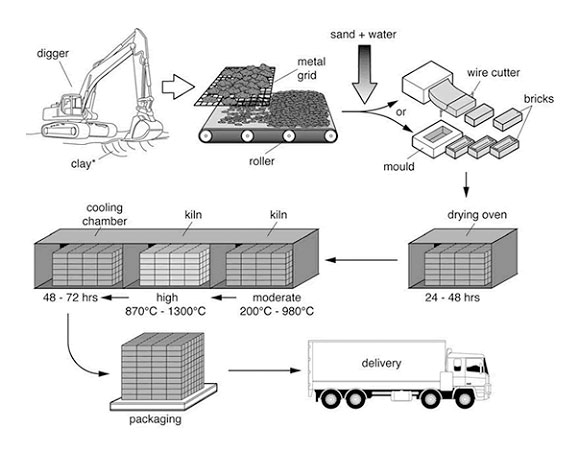Real IELTS Examiner Techniques | Practical Structures | Personal Feedback
IELTS Process Diagrams
How To Write An IELTS Process Diagram
Process diagrams are used in IELTS Academic Writing Task 1 to illustrate a series of stages or steps involved in creating or achieving something.
These diagrams require candidates to describe the sequence and relationships between each stage clearly and logically.
This page provides a comprehensive guide on tackling process diagrams, including strategies, vocabulary, grammar tips, and important techniques for using passive voice correctly. Students are encouraged to transform nouns into verbs and use passive structures to accurately describe stages, ensuring a dynamic and formal writing style.
Candidates should focus on covering all major stages, sequencing events logically, and connecting stages clearly. It is also essential to avoid listing every detail separately; stages should be linked using sequencing words, and descriptions should remain concise and coherent.

Understanding the Task Requirements
Word Count: Write at least 150 words. While there is no strict upper limit, responses exceeding 180 words may introduce unnecessary detail.
Time: Allocate around 20 minutes.
Focus Areas: Address Task Achievement, Coherence and Cohesion, Lexical Resource, and Grammatical Range and Accuracy.
Overview: Highlight the overall process and key stages succinctly.
The diagram illustrates the stages involved in the production of bricks for construction purposes, starting from clay extraction and ending with the delivery of finished products.
Overall, there are seven stages in the process, beginning with the excavation of clay from the ground and ending with the delivery of packaged bricks to customers.
Initially, clay is excavated from the ground using a digger and placed onto a metal grid, where it is filtered and then passed through a roller to remove larger pieces. Following this, sand and water are added to the processed clay, and the mixture is either moulded into brick shapes or cut with a wire to form bricks. The shaped bricks are then placed in a drying oven for a period of one to two days.
Subsequently, the dried bricks are fired in a kiln at moderate temperatures ranging from 200°C to 980°C, and then at higher temperatures between 870°C and 1300°C. After heating, they are moved into a cooling chamber where they are cooled for a further two to three days. Finally, the bricks are packaged and transported to their destination for delivery.
Vocabulary for Process Diagrams
Sequencing Words:
first, initially, at the beginning
then, next, subsequently, after that
finally, at the end, in the last stage
Common Verbs in Passive Voice:
is/are added, mixed, heated, transported, assembled
is/are processed, packaged, delivered, converted, extracted
Descriptive Adverbs:
gradually, carefully, efficiently
rapidly, systematically, simultaneously
Common Pitfalls
Misinterpreting Stages: Ensure all steps are described in the correct sequence without missing major stages.
Overloading Details: Avoid unnecessary repetition or excessive description of minor features.
Inconsistent Tenses: Use the present simple tense consistently in passive constructions.
Ignoring Connections: Ensure that transitions between stages are clear and logical using appropriate linking words.
